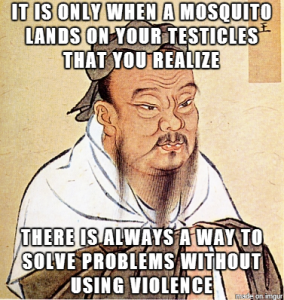By: Bears Butt

I was reading a duck hunting story in a Ducks Unlimited magazine and in it the author talked about getting into the duck blind early and also staying late, both meaning before and after legal shooting hours. All of us duck hunters have experienced the flights of birds before and after legal shooting times. There is a magic moment in the waterfowl world where they all seem to want to take flight and all we, as hunters can do, is watch them. Thousands upon thousands of the birds we have chased all day long are now flying in and landing all around us. Quacking and making splashing noises as they hurriedly catch up on their feasting. It’s actually pretty cool to see it. In the early morning twighlight hours as we are setting out our decoys, the birds are in flight to go back to their resting ponds after being out all night. That too is a great sight to see, but it leaves you feeling a bit empty knowing they are going to the resting area and most of them won’t be coming out any time soon.
Anyway, in this story I was reading the author mentioned “Perkinje Effect”…..What the heck is that?
Well I looked it up and in my own way of telling you (without all the scientific stuff) it goes something like this:
A young man named Perkinje, somewhere in Europe, observed that his favorite flower, the Geranium, had a vivid red batch of flowers on the stems and the leaves were dark and contrasty blue/green. He loved these flowers, but his observation was this: As the light of the day began to darken after the sun went down, the red flower took on a different appearance. Now make a note, he probably wasn’t the first one to ever see something change like that, I highly doubt he was, but he was the first to write down what his observance was….the vivid red began to take on a dark shade of well, black and at the same time, the blue/green leaves began to take on a shade of well, whitish.
As time went on, his curiosity continued forcing him to study light and the eyes and how light effects the eyes and how things are seen. So, when we are out hunting and it begins to get dark around us, we have seen how the bushes and trees lose any color and just turn dark, so that all the leaves on the bushes and trees become the same dull shade with little or no 3 d effect to them. We also have noted that the animals begin to show up in abundance as well. Are they showing up at this time of day because they know they have the upper hand on the ability to see after dark…I think so. Especially those with big claws and teeth.
Well, Perkinje wrote down what he saw and theorized what was happening in 1819 and since then there have been a lot of studies done on this. The real “what happens” has changed some since his writing, but it still carries his name. Our eyes have cones and rods in them and it’s the cones that can tell the difference between the colors, while the rods can only see light and dark. In the twilight hours our eyes switch over from the color vision of the cones, to the light vision of the rods. It’s a slow process marked by the visible light around us at the time. The next time you are out camping, get away from any un-natural light source and sit and observe how the colors disappear and turns into a dark something. Try not to worry too much about the sound behind you, it is probably only a large grizzly bear, and if you don’t move, he might just perceive you as another bush in the woods. After all, he don’t got no cones to work with.
Bears Butt
June 6, 2014


 Utah Fishing Reports
Utah Fishing Reports




